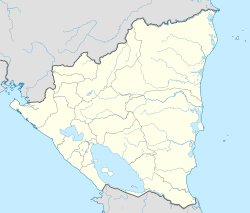Las Sabanas facts for kids
Quick facts for kids
Las Sabanas
|
|
|---|---|
|
Municipality
|
|
| Country | |
| Department | Madriz |
| Area | |
| • Municipality | 25 sq mi (65 km2) |
| Population
(2005)
|
|
| • Municipality | 4,136 |
| • Density | 164.8/sq mi (63.6/km2) |
| • Urban | 904 |
Las Sabanas is a small and charming municipality located in the Madriz department of Nicaragua. It's a place where many people live and work, contributing to the local culture and economy.
Contents
What is a Municipality?
A municipality is like a local government area. It's a region that has its own local leaders and rules. These leaders help manage things like schools, roads, and public services for the people living there. Las Sabanas is one such area in Nicaragua.
Where is Las Sabanas?
Las Sabanas is found in the northern part of Nicaragua. It's part of the Madriz department, which is one of the 15 departments in the country. Departments are similar to states or provinces in other countries.
Geography and Size
The municipality of Las Sabanas covers an area of about 65 square kilometers (about 25 square miles). To give you an idea, that's roughly the size of a small city. It's a mix of different landscapes, including flat areas and some hills.
Climate and Environment
Like much of Nicaragua, Las Sabanas has a tropical climate. This means it's generally warm all year round. There are usually two main seasons: a rainy season and a dry season. This climate helps different plants and animals to thrive.
People of Las Sabanas
According to a 2005 count, about 4,136 people lived in Las Sabanas. Most of these people live in rural areas, meaning they live outside the main town center. Only about 904 people lived in the urban part of the municipality at that time.
Community Life
The people of Las Sabanas often live in close-knit communities. Many families work in agriculture, growing crops or raising animals. Community events and traditions are important parts of daily life.
Economy and Work
The main way people make a living in Las Sabanas is through farming. They grow various crops that are suited to the local climate. This helps provide food for the community and for sale in other areas.
See also
 In Spanish: Las Sabanas para niños
In Spanish: Las Sabanas para niños


